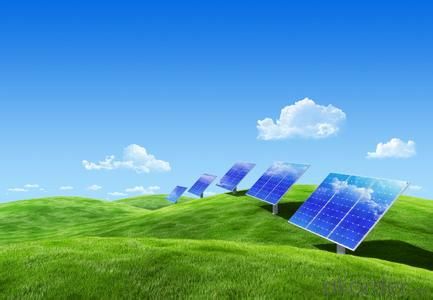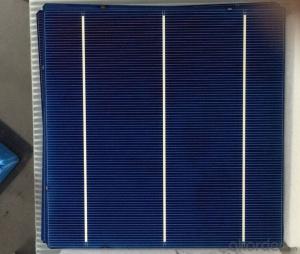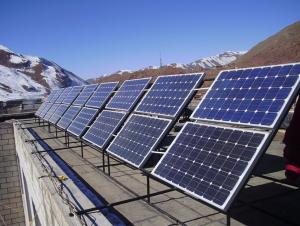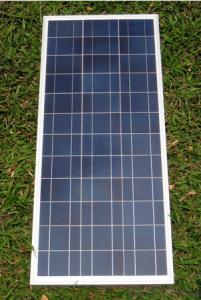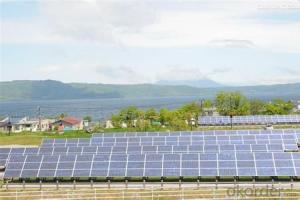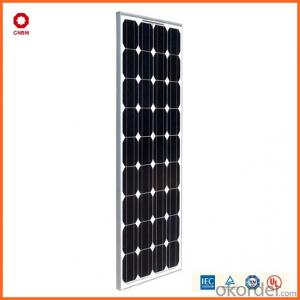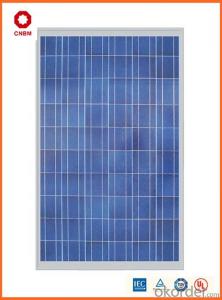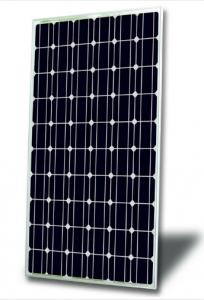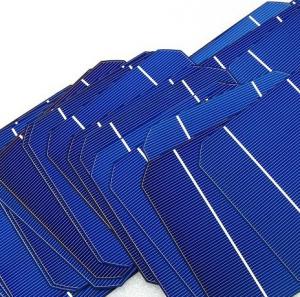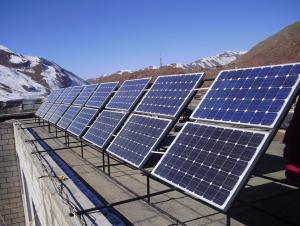Solar Cells Made in USA - High Efficiency Monocrystalline Silicon Solar Cell 80W
- Loading Port:
- China Main Port
- Payment Terms:
- TT OR LC
- Min Order Qty:
- -
- Supply Capability:
- -
OKorder Service Pledge
Quality Product, Order Online Tracking, Timely Delivery
OKorder Financial Service
Credit Rating, Credit Services, Credit Purchasing
You Might Also Like
Quick Details
| Place of Origin: | Model Number: | ||||
| Material: | Size: | Number of Cells: | |||
| Max. Power: |
Packaging & Delivery
| Packaging Detail: | carton box |
| Delivery Detail: | 15 days |
Specifications
solar cell
1. 0.5 to 380W solar panel
2. high effiency
3. monocrystalline silicon
4. polycrystalline silicon
Supply all kinds of high effiency mono/poly crystalline silicon solar module
Specifications:
| Model number | Pm (W) | Voc (V) | Isc (A) | Vm (V) | Im (A) | unit Size (mm) | Unit Weight (Kg) | C/N | Carton dimension (mm) | Gross weight (Kgs/ctn) | Maxmum system Voltage (V) |
| SNG00 | 0.5 | 5 | 0.137 | 4 | 0.1 | 100*55*3.2 | 0.03 | 700Pcs/CN | 460*280*200 | 21 | 36 |
| SNG001 | 1 | 7.2 | 0.183 | 6 | 0.2 | 110*80*3.2 | 0.05 | 500Pcs/CN | 460*280*200 | 25 | 36 |
| SNG002 | 2 | 11 | 0.24 | 9 | 0.2 | 135*135*3.2 | 0.1 | 200Pcs/CN | 460*280*200 | 20 | 36 |
| SNG003 | 3 | 21.6 | 0.19 | 18 | 0.2 | 250*180*25 | 0.6 | 16Pcs/CN | 460*280*200 | 10.8 | 600 |
| SNG005 | 5 | 21.6 | 0.33 | 18 | 0.3 | 340*180*25 | 0.8 | 10Pcs/CN | 380*220*360 | 9 | 600 |
| SNG010 | 10 | 21.6 | 0.64 | 18 | 0.6 | 340*280*25 | 1.6 | 10Pcs/CN | 380*300*360 | 17 | 600 |
| SNG015 | 15 | 21.6 | 0.95 | 18 | 0.9 | 500*270*25 | 2 | 10Pcs/CN | 560*300*360 | 21.2 | 600 |
| SNG020 | 20 | 21.6 | 1.27 | 18 | 1.2 | 650*270*25 | 2.8 | 10Pcs/CN | 630*300*360 | 29.2 | 600 |
| SNG025 | 25 | 21.6 | 1.58 | 18 | 1.4 | 650*270*25 | 3.8 | 10Pcs/CN | 700*300*360 | 39.2 | 600 |
| SNG030 | 30 | 21.6 | 1.89 | 18 | 1.7 | 500*340*25 | 3.8 | 10Pcs/CN | 600*380*360 | 49.8 | 600 |
| SNG040 | 40 | 21.6 | 2.53 | 18 | 2.3 | 600*530*33 | 4.8 | 10Pcs/CN | 700*600*360 | 32 | 600 |
| SNG045 | 45 | 21.6 | 2.75 | 18 | 2.5 | 600*530*33 | 5.8 | 10Pcs/CN | 700*600*480 | 32 | 600 |
| SNG050 | 50 | 21.6 | 3.16 | 18 | 2.9 | 1000*440*33 | 6 | 5Pcs/CN | 1100*500*240 | 32 | 600 |
| SNG055 | 55 | 21.6 | 3.48 | 18 | 3.2 | 1000*440*33 | 6 | 5Pcs/CN | 1100*590*240 | 35 | 600 |
| SNG060 | 60 | 21.6 | 3.7 | 18 | 3.3 | 1000*530*33 | 7 | 5Pcs/CN | 1100*590*240 | 35 | 600 |
| SNG065 | 65 | 21.6 | 4 | 18 | 3.6 | 1000*530*33 | 7 | 5Pcs/CN | 1100*590*240 | 35 | 600 |
| SNG070 | 70 | 21.6 | 4.3 | 18 | 3.9 | 1000*530*33 | 7 | 5Pcs/CN | 1100*590*240 | 40 | 600 |
| SNG075 | 75 | 21.6 | 4.74 | 18 | 4.3 | 1190*530*33 | 7.5 | 5Pcs/CN | 1250*560*240 | 40 | 600 |
| SNG080 | 80 | 21.6 | 5 | 18 | 4.6 | 1190*530*33 | 7.5 | 5Pcs/CN | 1250*560*240 | 40 | 600 |
| SNG085 | 85 | 21.6 | 5.2 | 18 | 4.7 | 1190*530*33 | 7.5 | 5Pcs/CN | 1250*560*240 | 21 | 600 |
| SNG100 | 100 | 21.6 | 6.33 | 18 | 5.8 | 1400*630*33 | 10.5 | 2Pcs/CN | 1450*680*110 | 13 | 600 |
| SNG125 | 125 | 43 | 3.85 | 36 | 3.5 | 1190*630*50 | 11.5 | 2Pcs/CN | 1450*680*110 | 13 | 600 |
| SNG130 | 130 | 43 | 3.97 | 36 | 3.6 | 1190*630*50 | 11.5 | 2Pcs/CN | 1450*680*110 | 13 | 600 |
| SNG135 | 135 | 43 | 4.1 | 36 | 3.8 | 1190*630*50 | 11.5 | 2Pcs/CN | 1450*680*110 | 36 | 600 |
| SNG140 | 140 | 43 | 4.35 | 36 | 4 | 1580*800*50 | 16 | 2Pcs/CN | 1630*840*110 | 36 | 600 |
| SNG150 | 150 | 43 | 4.68 | 36 | 4.3 | 1580*800*50 | 16 | 2Pcs/CN | 1630*840*110 | 36 | 600 |
| SNG160 | 160 | 43 | 4.98 | 36 | 4.6 | 1580*800*50 | 16 | 2Pcs/CN | 1630*840*110 | 36 | 1000 |
| SNG165 | 165 | 43 | 5.08 | 36 | 4.7 | 1580*800*50 | 16 | 2Pcs/CN | 1630*840*110 | 36 | 1000 |
| SNG175 | 175 | 43 | 5.39 | 36 | 5 | 1580*800*50 | 16 | 2Pcs/CN | 1680*840*110 | 36 | 1000 |
| SNG180 | 180 | 43 | 5.54 | 36 | 5.1 | 1580*800*50 | 16 | 2Pcs/CN | 1630*840*110 | 36 | 1000 |
| SNG230 | 230 | 43 | 7 | 36 | 6.4 | 1580*980*50 | 21 | 2Pcs/CN | 1630*1100*110 | 42 | 1000 |
| SNG270 | 270 | 43 | 8.3 | 36 | 7.5 | 1950*980*50 | 25 | 2Pcs/CN | 2000*1100*65 | 50 | 1000 |
| SNG380 | 380 | 43 | 11.6 | 36/72 | 10.6/5.3 | 1600*1600*50 | 30 | 1Pcs/CN | 1700*1700*65 | 30 | 1000 |
- Q: What is the impact of hurricane-force winds on solar cell efficiency?
- Hurricane-force winds can have a significant impact on solar cell efficiency. These strong winds can cause physical damage to the solar panels, such as breaking or displacing them, which directly affects their ability to generate electricity. Additionally, debris and flying objects carried by the winds can scratch or shatter the protective glass covering the solar cells, reducing their efficiency further. Therefore, the impact of hurricane-force winds on solar cell efficiency is generally negative and can result in a temporary or permanent decrease in energy production.
- Q: What is the impact of solar cells on reducing energy poverty?
- Solar cells have a significant impact on reducing energy poverty by providing access to electricity in remote areas that are not connected to the grid. They offer a reliable and sustainable source of power, enabling households to meet their basic energy needs and improve their quality of life. Additionally, solar cells reduce dependence on expensive and polluting fossil fuels, making energy more affordable and environmentally friendly for those living in poverty.
- Q: Where and how can we find the best solar cells suppliers?
- Since there are so many solar cells in the market all over the world, the best way to sort out the best solar cell supplier to use the internet and its search engine to fine those solar cell suppliers with good ratings.
- Q: What is the role of solar cells in powering data centers?
- Solar cells play a crucial role in powering data centers by harnessing the sun's energy and converting it into electricity. These cells, also known as photovoltaic cells, generate clean and renewable energy that can be used to fulfill a significant portion of a data center's power requirements. By utilizing solar power, data centers can reduce their reliance on traditional fossil fuel-based energy sources, minimize their carbon footprint, and contribute to a more sustainable and environmentally friendly approach to powering their operations.
- Q: What is the most commonly used material for solar cells?
- It is mainly the crystalline silicon materials (including polysilicon and monocrystalline silicon), its market share in more than 90% and in the future for a long period of time will still be the main material of solar cells.
- Q: Can solar cells be used in harsh climates?
- Yes, solar cells can be used in harsh climates. Solar cells are designed to withstand extreme weather conditions, including high temperatures, cold temperatures, and strong winds. They are often tested and certified to meet specific durability and performance standards, ensuring their reliability in harsh climates. Additionally, advancements in solar technology have led to the development of specialized solar panels that are specifically designed to perform well in extreme weather conditions, such as snow, hail, and sandstorms.
- Q: The working principle of solar cells includes the three processes
- The solar cells absorb photons with a certain energy and excite unbalanced carriers (photogenerated carriers) - electron - hole pairs. These electrons and holes should have sufficient life, and they will not disappear after they are separated.
- Q: How are solar cells used in calculators?
- Solar cells are used in calculators to convert sunlight into electricity. This electricity is then used to power the calculator, eliminating the need for batteries or other external power sources.
- Q: How much land is required to install solar cells?
- The amount of land required to install solar cells varies depending on various factors such as the type and efficiency of the solar panels, the amount of electricity desired, and local conditions. On average, it is estimated that 1 megawatt (MW) of solar power requires approximately 5-10 acres of land. However, advancements in solar technology have led to the development of more efficient panels, reducing the land footprint needed for installation. Additionally, innovative approaches like rooftop solar panels can utilize existing structures, minimizing the need for additional land.
- Q: Can solar cells be used for powering satellites?
- Yes, solar cells can be used for powering satellites. In fact, they are one of the most common and efficient methods of generating electricity in space. Solar cells convert sunlight directly into electricity, which is then used to power various systems and instruments onboard a satellite.
Send your message to us
Solar Cells Made in USA - High Efficiency Monocrystalline Silicon Solar Cell 80W
- Loading Port:
- China Main Port
- Payment Terms:
- TT OR LC
- Min Order Qty:
- -
- Supply Capability:
- -
OKorder Service Pledge
Quality Product, Order Online Tracking, Timely Delivery
OKorder Financial Service
Credit Rating, Credit Services, Credit Purchasing
Similar products
Hot products
Hot Searches
Related keywords

